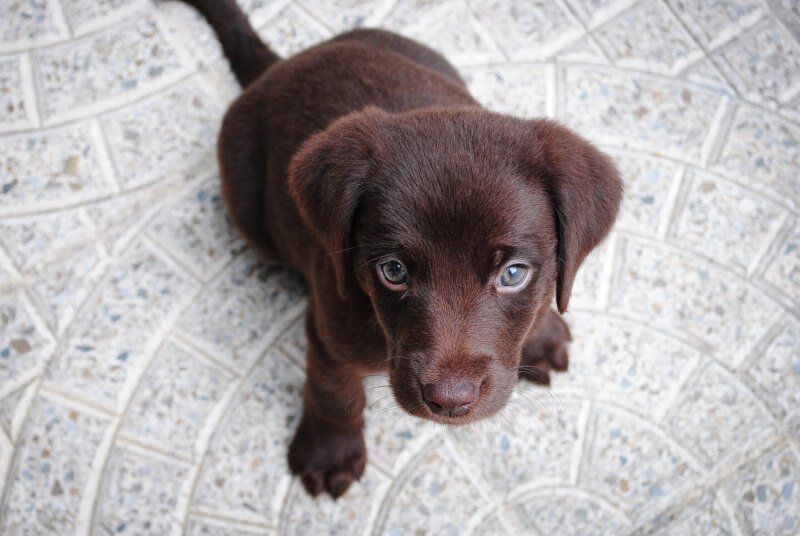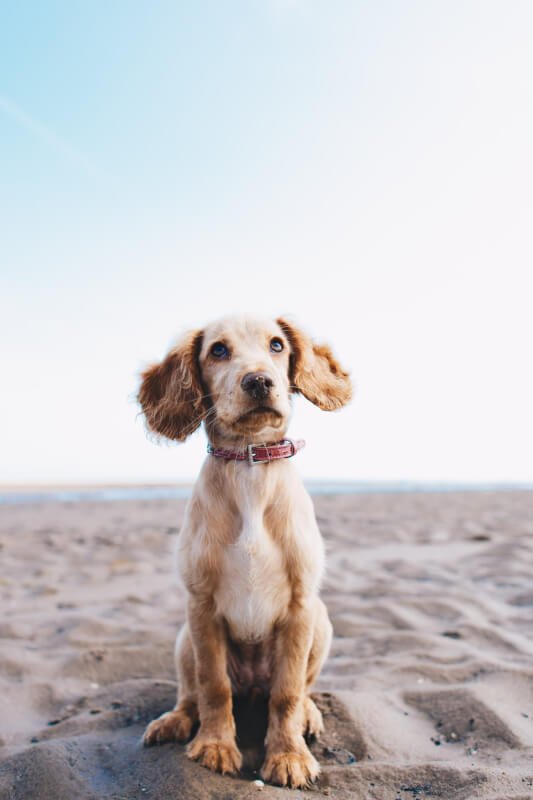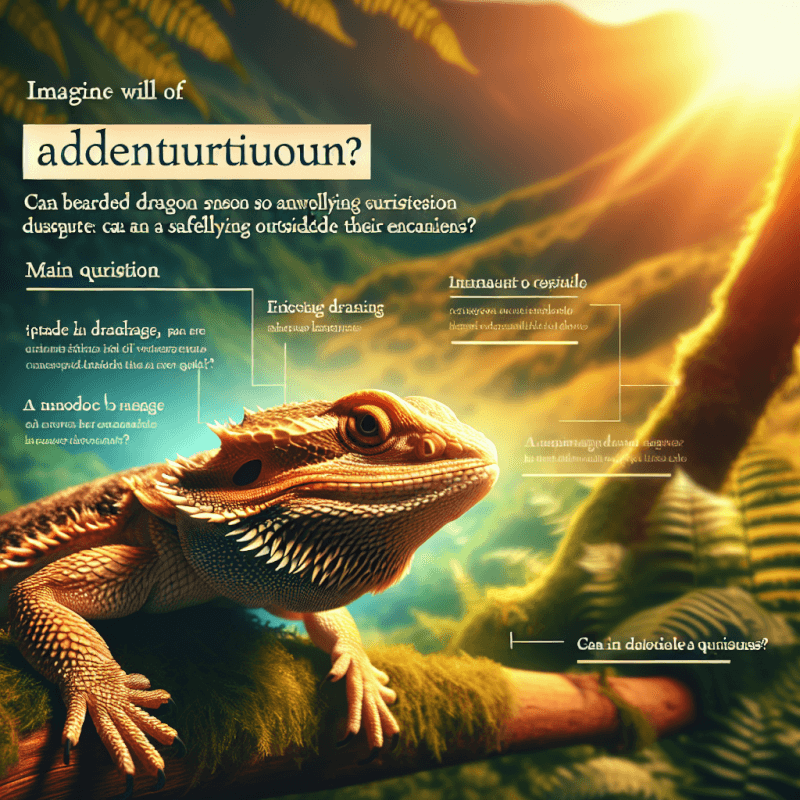Have you ever wondered if it’s safe to take your beloved bearded dragon outside? Well, you’re in luck because today we’re going to explore the wonderful world of outdoor adventures for your scaly friend. Many reptile enthusiasts are curious about whether their bearded dragons can enjoy some fresh air and sunlight. In this article, we’ll discuss the benefits and precautions of taking your bearded dragon outside, helping you make an informed decision that will keep your pet happy and healthy. So, let’s lace up those walking shoes and unveil the great outdoors for your little dragon buddy!

Benefits of Taking Your Bearded Dragon Outside
Promotes Physical and Mental Stimulation
Taking your bearded dragon outside provides them with the opportunity to engage in physical and mental activities that are crucial for their overall well-being. By allowing your pet to explore new environments, they can engage their senses and exercise their muscles, promoting a healthy and active lifestyle. This stimulation can help prevent boredom and the development of destructive behaviors.
Exposure to Natural Sunlight and Fresh Air
Bearded dragons, like all reptiles, require natural sunlight to maintain their overall health. By taking them outside, they can bask in the warm rays of the sun, which helps regulate their body temperature and aids in the production of essential vitamin D. Additionally, the fresh air can provide a refreshing change of scenery for your pet, and the different scents and sounds can be stimulating for their senses.
Enhancing Vitamin D Synthesis
Vitamin D is crucial for the proper functioning of a bearded dragon’s body. It aids in the absorption of calcium and promotes bone health. While bearded dragons can obtain some vitamin D from their diet, exposure to natural sunlight is the most effective way for them to synthesize this essential nutrient. Taking your bearded dragon outside allows them to soak up the sun’s rays, ensuring they receive the necessary amount of vitamin D for optimal health.
Opportunity for Socialization
Just like humans, bearded dragons are social creatures. Taking them outside provides an excellent opportunity for them to interact and bond with their human caregivers. They can observe the world around them, experience new sights and sounds, and even encounter other people or animals, with your supervision, of course. This socialization can strengthen the bond between you and your bearded dragon, leading to a happier and more confident pet.
Variety of Environments to Explore
The great outdoors offers a vast array of environments for your bearded dragon to experience. Whether it’s a grassy park, a sandy beach, or a forested trail, each location provides unique opportunities for exploration. These diverse environments expose your pet to different textures, smells, and sights, stimulating their curious nature. Exploring these new surroundings can be a thrilling adventure for your bearded dragon, enriching their daily life.
Considerations Before Taking Your Bearded Dragon Outside
Temperature and Weather Conditions
Before venturing outdoors, it is crucial to consider the temperature and weather conditions. Bearded dragons are ectothermic, meaning they rely on external sources to regulate their body temperature. Extreme heat or cold can be dangerous for them and may lead to overheating or hypothermia. It is essential to choose the right time of day when the temperature is within a safe range for your pet. Additionally, monitor weather conditions to avoid exposing your bearded dragon to rain or harsh winds, which can be stressful for them.
Secure and Escape-Proof Enclosure
To ensure the safety of your bearded dragon, it is imperative to provide a secure and escape-proof enclosure when taking them outside. This enclosure should be sturdy and well-ventilated, preventing any potential escapes or encounters with predators. A terrarium or a reptile-specific enclosure with a secure lid is recommended, ensuring that your bearded dragon remains protected while enjoying the outdoor environment.
Health and Age of the Bearded Dragon
The health and age of your bearded dragon should be carefully considered before heading outdoors. If your pet is young, elderly, or has any underlying health conditions, they may be more vulnerable to the elements or stress. Consult with a veterinarian or herpetologist to ensure that your bearded dragon is healthy enough for outdoor excursions. Regular check-ups and monitoring of your pet’s overall well-being are essential to prevent any potential health issues.
Protection from Predators
When taking your bearded dragon outside, it is vital to be aware of potential predators in the area. Bearded dragons are small and defenseless, making them vulnerable to larger animals such as dogs, cats, and birds of prey. Always supervise your pet closely and keep a safe distance from other animals. It’s crucial to choose a location that minimizes the risk of encounters with potential predators, ensuring the safety of your bearded dragon at all times.
Avoiding Harmful Substances or Plants
Ensure that the outdoor environment you choose for your bearded dragon is free of harmful substances or toxic plants. Some common garden pesticides or fertilizers can be toxic to reptiles, so be cautious of these when selecting your location. Research the local flora and fauna of the area to ensure there are no plants that could potentially harm your pet. Always keep a close eye on what your bearded dragon is exploring and promptly remove them from any potentially dangerous situations.

Preparing to Take Your Bearded Dragon Outside
Consulting with a Herpetologist or Vet
Before taking your bearded dragon outside, consult with a herpetologist or veterinarian who specializes in reptiles. They can provide valuable insights and advice specific to your pet’s needs. They can assess your bearded dragon’s health, provide recommendations on outdoor activities, and offer guidance on any necessary supplements or precautions. Professional guidance ensures that you are well-informed and prepared for a safe outdoor experience with your pet.
Ensuring Proper Equipment and Supplies
Gather all the necessary equipment and supplies before heading outside with your bearded dragon. This includes a secure enclosure, appropriate bedding or substrate, water and food dishes, as well as any toys or climbing structures for enrichment. Additionally, ensure you have a reliable means of transportation to and from the outdoor location. Having everything ready in advance will make the experience smoother and more enjoyable for both you and your pet.
Acclimating Your Bearded Dragon to Outdoors
Bearded dragons need time to adjust to the outdoors, especially if they have spent most of their lives indoors. Start by slowly introducing them to the outside environment for short periods. Gradually increase the duration as they become more comfortable. This gradual acclimation allows your pet to adjust to the change in temperature, humidity, and exposure to natural sunlight. Patience and consistency are key during this process.
Choosing the Suitable Time and Location
Selecting the right time and location for outdoor activities is crucial for the well-being of your bearded dragon. Early morning or late afternoon is generally the best time to go outside, as temperatures are usually milder during these periods. Choose a location that offers both shade and areas for basking, allowing your pet to regulate their body temperature effectively. Avoid areas with high foot traffic or potential sources of pollution to ensure a safe and enjoyable experience for your bearded dragon.
Preparing a Comfortable Outdoor Habitat
Creating a comfortable outdoor habitat is essential for your bearded dragon’s well-being. The enclosure should mimic their indoor habitat as closely as possible. Provide appropriate substrates, such as reptile carpet or natural bedding, to ensure a comfortable surface for your pet to walk on. Include hiding spots, branches, and rocks to replicate their natural environment and offer different areas for exploration and basking. Place fresh water and food dishes within the enclosure to meet their hydration and nutritional needs.
Supervising and Monitoring Your Bearded Dragon
Keeping an Eye on Behavior and Comfort
When outside with your bearded dragon, it is essential to closely observe their behavior and comfort levels. Pay attention to any signs of stress, such as excessive pacing, tail flicking, or flared beard. If your pet appears agitated or uncomfortable, it may be time to bring them back indoors. Conversely, observe signs of contentment, such as relaxed body posture, basking, or exploration. Being attuned to your bearded dragon’s behavior allows you to ensure their well-being throughout the outdoor experience.
Avoiding Direct Sunlight and Overheating
While exposure to sunlight is beneficial, it is important to avoid subjecting your bearded dragon to direct sunlight for prolonged periods, especially during the hottest parts of the day. Bearded dragons can quickly overheat, leading to heat stroke or other health issues. Monitor their basking time and provide shaded areas within the enclosure for them to cool down if necessary. Pay attention to your pet’s body temperature and behavior, and promptly remove them from direct sunlight if they show any signs of distress.
Protecting from Insect Bites or Parasites
When in the outdoors, bearded dragons may encounter insects or parasites that can be harmful or irritating to their skin and immune system. Take precautions to protect your pet by avoiding areas where insects are likely to be abundant, such as near stagnant water or dense vegetation. Inspect your bearded dragon’s body for any signs of bites, stings, or parasites after each outdoor excursion. Regularly checking for external parasites and maintaining a clean enclosure is crucial to ensure your pet’s health and comfort.
Ensuring Hydration and Offering Water
Bearded dragons can become dehydrated, especially in warm weather. Ensure that your pet has access to fresh water during their outdoor excursions. Place a shallow water dish within their enclosure to allow them to hydrate as needed. Monitor their drinking habits and refill the water dish regularly to ensure a constant supply. Proper hydration is vital for your bearded dragon’s overall health and can help prevent serious dehydration-related complications.
Monitoring for Signs of Stress or Illness
Outdoor time should be an enjoyable and stress-free experience for your bearded dragon. Regularly monitor your pet for any signs of stress or illness during and after being outside. This includes changes in appetite, lethargy, abnormal stool, or respiratory issues. If you notice any concerning symptoms, it is important to consult with a veterinarian experienced in reptile care. Regular health check-ups and vigilance are key to maintaining your bearded dragon’s well-being.

Enjoying Outdoor Activities with Your Bearded Dragon
Taking Short Walks and Exploring
One of the most enjoyable activities you can share with your bearded dragon is taking short walks and allowing them to explore their surroundings. While keeping your pet secure in their enclosure, gently lead them on a leash or harness and let them roam within a controlled area. Encourage exploration by providing a variety of natural surfaces for them to walk on, such as grass, sand, or rocks. Keep in mind their comfort and adjust the pace and duration of the walk according to their needs.
Providing Opportunities for Climbing and Basking
Bearded dragons are natural climbers and baskers, so providing opportunities to engage in these behaviors outdoors is essential. Set up branches or rocks for climbing and provide elevated platforms for basking within their enclosure. Bearded dragons enjoy soaking up the sun and regulating their body temperature, so ensure there are both shaded areas and spots to bask comfortably. By replicating their natural habitat, you can offer a rewarding and enriching outdoor experience for your pet.
Introducing to Other Pets or Animals
If you have other pets or animals, it can be a wonderful opportunity to introduce them to your bearded dragon in a controlled and supervised environment. This interaction can help socialize your bearded dragon and promote a sense of companionship. However, it is important to be cautious and ensure the safety of all animals involved. Always closely supervise interactions, and never leave your bearded dragon alone with other pets, as their safety is paramount.
Engaging in Interactive Play
Just like any pet, bearded dragons can benefit from interactive playtime outdoors. Consider bringing along their favorite toys or introducing them to new ones specifically designed for reptiles. This can include puzzle feeders, balls, or even small climbing structures. Engaging your bearded dragon in interactive play not only provides mental stimulation but also strengthens the bond between you and your pet.
Offering Healthy Treats as Rewards
Using treats as positive reinforcement can be an effective way to reward and encourage desired behaviors during outdoor activities. Ensure that the treats are suitable for bearded dragons and do not contain any harmful ingredients. Offer treats sparingly to avoid overfeeding, as obesity can be a serious health concern for reptiles. Healthy options for treats can include small pieces of fruits, vegetables, or commercially-prepared reptile treats that are specifically formulated for bearded dragons.
Alternatives to Outdoor Time
Creating a Simulated Outdoor Experience
If outdoor excursions are not feasible or practical, you can create a simulated outdoor experience for your bearded dragon indoors. Set up a space with natural sunlight or utilize artificial lighting that mimics natural UVB rays. Create an environment with various textures, hiding spots, and climbing structures to replicate the outdoors. Regularly rotate and introduce new enrichment activities to keep your bearded dragon mentally stimulated and engaged.
Setting Up an Indoor Reptile Enclosure
For those unable to take their bearded dragon outside, creating an enriched indoor reptile enclosure is a viable alternative. This entails providing a spacious and well-equipped habitat that mimics their natural environment. Include UVB lighting, temperature gradients, hiding spots, and appropriate substrate to create a comfortable and engaging space for your pet. Regular interaction and handling are essential in maintaining a strong bond between you and your bearded dragon.
Using UVB Lights for Vitamin D Synthesis
If your bearded dragon is primarily indoors, providing proper UVB lighting is crucial for their overall health. UVB lights mimic the sun’s natural rays, allowing your pet to synthesize vitamin D effectively. Invest in high-quality UVB bulbs specifically designed for reptiles and ensure they are positioned correctly within the enclosure. Regularly monitor and replace the bulbs as recommended by the manufacturer to ensure optimal UVB output.
Offering a Variety of Enrichment Activities
Enrichment is important for the well-being of your bearded dragon, regardless of whether they spend time outdoors or indoors. Introduce a variety of enrichment activities to keep their minds stimulated and engaged. This can include puzzles, foraging activities, or providing different surfaces for them to explore and climb upon. Be creative and find activities that cater to your bearded dragon’s unique preferences and behaviors.
Interacting and Handling Your Bearded Dragon
While outdoor time provides a range of benefits, regular interaction and handling are crucial for the overall well-being of your bearded dragon. Spending quality time with your pet, even indoors, helps foster trust and strengthens the bond between you. Offer gentle handling, allowing them to climb safely on your hand or shoulder, and provide mental stimulation through interactive play or training sessions. Regular handling ensures that your pet feels secure, loved, and engaged.

Potential Risks and Precautions
Extreme Temperatures and Temperature Fluctuations
Be vigilant of extreme temperatures and temperature fluctuations that can pose risks to your bearded dragon’s health. Exposure to excessively high or low temperatures can lead to heat stroke, hypothermia, or other health issues. Regularly monitor the ambient temperature within the enclosure and ensure it remains within the appropriate range for your bearded dragon. Utilize thermometers and proper heating or cooling equipment, if necessary, to maintain a comfortable environment.
Escape or Getting Lost
The risk of escape or getting lost is a significant concern when taking your bearded dragon outside. Bearded dragons are agile climbers and can squeeze through surprisingly small spaces. Ensure that the outdoor enclosure is sturdy and escape-proof, with a lid or cover that cannot be easily opened. Never leave your bearded dragon unattended or unsupervised, as they can quickly disappear or encounter dangerous situations. Always prioritize their safety and take appropriate precautions to prevent escapes.
Predators and Hazards in the Environment
When in an outdoor environment, be aware of potential predators and other hazards that can pose a threat to your bearded dragon. Dogs, cats, birds of prey, and even larger insects may see your pet as prey or a threat. Choose a location with minimal predator presence and be vigilant during outdoor activities. Keep a close eye on your bearded dragon and be prepared to intervene or relocate if necessary. Stay informed about potential hazards in the area, such as toxic plants or fire ants, to protect your pet from harm.
Exposure to Toxic Substances or Plants
The outdoor environment contains various plants and substances that can be toxic to bearded dragons. Research the local flora and fauna of the area to identify any plants that may pose a risk to your pet. Avoid areas treated with pesticides or fertilizers that may be harmful if ingested. Always supervise your bearded dragon and prevent them from coming into contact with any potentially toxic substances or plants during their outdoor adventures. Promptly remove them from any dangerous situations to ensure their safety.
Injury or Illness from Unknown or Infected Animals
When outside, your bearded dragon may come into contact with other animals, some of which may carry diseases or pose a risk of injury. Minimize the risk of illness or injury by avoiding contact with unknown or potentially infected animals. Keep your bearded dragon in a secure enclosure that prevents direct contact with other animals. Regularly check for any signs of injury or illness, and seek veterinary care if necessary. Prioritize their safety and well-being at all times.
Conclusion
Taking your bearded dragon outside is a wonderful opportunity to enhance their physical and mental well-being. It promotes physical and mental stimulation, provides exposure to natural sunlight and fresh air, enhances vitamin D synthesis, offers opportunities for socialization, and allows exploration of various environments. However, careful considerations, such as temperature and weather conditions, a secure enclosure, and the health and age of your bearded dragon, are crucial before heading outdoors.
Preparation should include consulting with a herpetologist or vet, ensuring proper equipment and supplies, acclimating your bearded dragon to the outdoors, choosing a suitable time and location, and preparing a comfortable outdoor habitat. While outside, it is important to supervise and monitor your bearded dragon closely, paying attention to their behavior, avoiding direct sunlight and overheating, protecting them from insect bites or parasites, ensuring hydration, and monitoring for signs of stress or illness.
Engaging in outdoor activities with your bearded dragon, such as short walks, climbing, introducing them to other pets, interactive play, and offering healthy treats as rewards, can further enhance the experience and strengthen your bond. If outdoor time is not possible, alternatives such as creating a simulated outdoor experience, setting up an enriched indoor reptile enclosure, using UVB lights for vitamin D synthesis, offering a variety of enrichment activities, and regular interaction and handling can provide similar benefits.
However, along with the benefits come potential risks and precautions, including extreme temperatures, escape or getting lost, predators and hazards in the environment, exposure to toxic substances or plants, and injury or illness from unknown or infected animals. By staying vigilant, prioritizing safety, and taking appropriate precautions, you can ensure a positive and enjoyable outdoor experience for your bearded dragon.
In conclusion, taking your bearded dragon outside can be a rewarding and enriching experience for both you and your pet. It offers a range of benefits, promotes their overall well-being, and can help build a trusting and enjoyable relationship. By balancing safety and health concerns, and being attuned to your bearded dragon’s needs, you can create a fulfilling outdoor experience that enhances their quality of life. Remember to adapt and learn as you go, tailoring the outdoor activities to suit your individual bearded dragon’s preferences and ensuring their happiness and well-being throughout their life.



